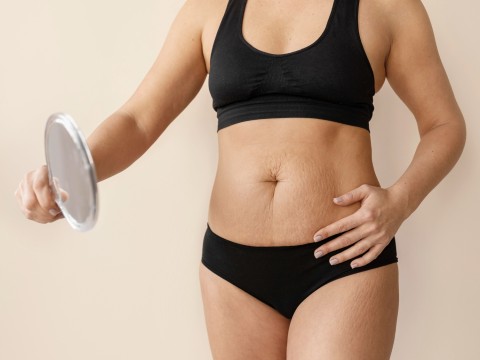Gastric Balloon (6 Months)
The Gastric Balloon is another option for weight loss, offering a non-surgical alternative for patients in order to control body weight. This, when placed within the stomach, helps to create a sensation of fullness, hence minimizing total food intake. The usage is generally recommended for six months and can create a big difference in the weight loss and overall health of the patient. It would be important in the six-month period to understand the effects, the benefits, and the side effects of such an approach.
For a lot of people, six months is quite an accomplishment in their journey to lose weight. It is befitting that one be informed of what to expect concerning the progress of weight loss, changes in diet, and challenges faced during that period.
6 Months Results of Gastric Balloon
The Gastric Balloon is very impressive for yielding great reduction in the weight of many users when used for six months. A person may generally lose from 15% to 25% of excess body weight. It would depend on each individual's adherence to dietary guidelines, physical activity, and rate of metabolism. These results can be maximized if one has support from healthcare professionals for close monitoring during this period.
Gastric Balloon 6-Month Diet Plan
The diet that one can get most from the Gastric Balloon is highly controlled. For a start, it may be a liquid diet in which your stomach gets accustomed to the balloon. Gradually, patients could return to normal solid foods. High-protein, low-calorie types of foods are especially recommended. This diet excludes the high-fat and sugary foods and is rich in nutrient- and fiber-rich food to continue the weight loss and more with regard to health.
Possible Side Effects after the 6-Month Placement of the Gastric Balloon
The most common side effects of the Gastric Balloon in the first weeks of use include nausea, abdominal pain, and bloating. Most side effects will resolve with time; in a few individuals, these symptoms may persist but often respond well to medical management. Rarely, serious complications can arise. Your healthcare professional can help to identify steps for managing and/or reducing whatever side effects you experience.
Gastric Balloon Food Plan
The right dieting schedule followed will definitely bring forth better results when on the Gastric Balloon. Inculcating a diet where lean proteins, vegetables, and whole grains are contained, while keeping foods highly concentrated with calories and fat at the barest minimum, will spur weight loss. Regular visits to a dietician will come up with personalized recommendations and keep you on the right track regarding diet.
Care and Maintenance in First 6 Months with a Gastric Balloon
The after-care and change in life are included in maintaining the benefits of the Gastric Balloon. After six months, practitioners can reassess the patient's progress and look into other options for weight management or balloon removal. Healthy eating and regular physical activity one does must be continued in maintaining the lost weight and general health.
Challenges and Tips for Managing the Gastric Balloon
This six-month period can pose different types of challenges on users, including poor adherence to dietary changes or drug side effects. Overcoming such hurdles involves practical goal setting, health professional support, and joining support groups. Management should be a balance of the good benefits of the balloon with lifestyle changes for the long-term success of an individual.
- Health Insurance
-
Accommodation
- Online Healthy Life Assistant 9/5
- Post - Experience Follow Up 1 Year
-
Extra Privileges

- Health Insurance
-
Accommodation
- Online Healthy Life Assistant 24/7
- Post - Experience Follow Up 1 Year
- Pre-Treatment Doctor Consultation
-
Extra Privileges

 Private
Private
- Health Insurance
- Healthy Life Butler
- Post - Experience Follow Up 2 Year
- World-Famous Doctor Consultation
-
Extra Privileges
No suitable hotel found for the relevant dates!
* Price varies depending on extra and upgrade selections.
Gastric Balloon is suitable for candidates with a BMI between 27 and 40, and the individual should be 22 years or older.
Gastric Balloon and Gastric Sleeve are distinct procedures catering to different BMI ranges. Gastric Sleeve is reserved for individuals with a BMI of 40 or higher and involves surgery, carrying inherent surgical risks. In comparison, Gastric Balloon is considered safer with minimal complications, making it a favorable choice for those with a BMI between 27 and 40.
Patients have been shown to lose up to 47% of their excess weight in six months after the gastric balloon. This is an average and it can be more or less according to your diet, exercise and lifestyle.
The initial four weeks following a gastric balloon procedure involve a specific diet. The first two weeks focus on a clear liquid diet, followed by the gradual introduction of soft pureed foods in the subsequent two weeks. Solid foods are reintroduced afterward.
Gastric balloon treatment is generally safe, with minimal complications. Potential side effects include nausea, vomiting, stomach cramps, diarrhea, and abdominal pain. These reactions are natural responses to the presence of the balloon and often subside within a few days.
No, a gastric balloon will not burst. Although resistant to stomach acid, there is a slight risk of puncture. In the event of a rupture, the balloon is removed from the stomach.
While individuals do not feel pain during the sedated procedure, some may experience discomfort during balloon inflation. Mild discomfort lasting 3-4 days is reported by about one-third of people after balloon insertion.
The duration varies between 4-6 or 12 months, depending on the type of gastric balloon.
Gastric balloon insertion is not recommended during breastfeeding due to potential impacts on milk quantity and quality from the post-balloon diet.
Individuals typically return to daily life and work within days.




